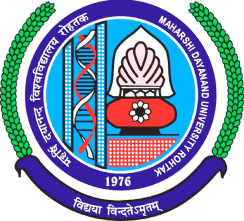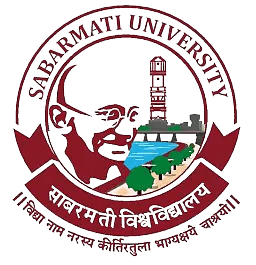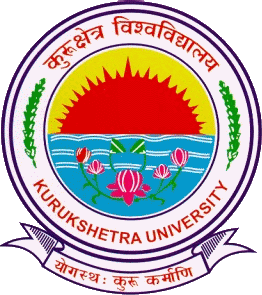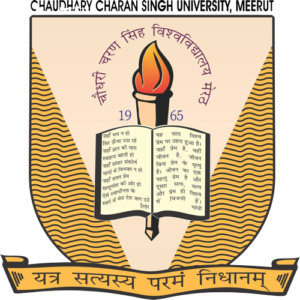
Ph.D in Sculpture: Admission Process, Eligibility Criteria, Duration, Course fees, Highlights, Subjects, Syllabus, FAQ.
Ph.D in Sculpture Overview:
- Program Focus: The program emphasizes the development of advanced skills in sculpture creation, along with a deep understanding of the historical, cultural, and theoretical aspects of sculpture as an art form.
- Coursework: The coursework in a Ph.D. in Sculpture often includes a combination of studio practice, seminars, workshops, and research-oriented classes. The curriculum may cover topics such as sculpture techniques, art history, critical theory, contemporary art practices, and interdisciplinary studies.
- Studio Work: Students typically engage in extensive studio work, creating sculptures that demonstrate their artistic abilities and personal style. This involves experimenting with various materials, techniques, and conceptual approaches to sculpture.
- Research and Dissertation: A significant portion of the program is dedicated to conducting original research and producing a dissertation. This research might explore diverse areas such as the cultural significance of sculptures, socio-political aspects of sculpture, innovative sculptural techniques, or the role of sculpture in different contexts.
- Faculty Guidance: Doctoral candidates work closely with faculty advisors and mentors who guide them in their research, creative practice, and dissertation writing.
- Interdisciplinary Approach: Many programs encourage interdisciplinary exploration, allowing students to integrate other fields such as art history, cultural studies, philosophy, technology, or environmental studies into their research and artistic practice.
- Critique and Presentation: Students participate in critiques, presentations, and exhibitions where they showcase their artwork and research findings. This offers opportunities for feedback, discussion, and refinement of their ideas and artistic practice.
- Career Opportunities: Graduates of a Ph.D. in Sculpture program often pursue careers as practicing artists, university professors, art critics, museum curators, art administrators, or arts consultants. The program equips them with advanced skills, critical thinking abilities, and expertise in sculpture, preparing them for various roles within the art world.
Ph.D in Sculpture Eligibility:
- Educational Background: Most Ph.D. programs in Sculpture require applicants to have a strong academic background in fine arts, sculpture, or a related field. A master’s degree in fine arts, sculpture, visual arts, or a relevant discipline is often necessary.
- Portfolio: A portfolio showcasing the applicant’s artistic skills, creativity, and proficiency in sculptural techniques is usually a crucial component of the application. The portfolio may include photographs, sketches, sculptures, and other visual representations of the applicant’s artwork.
- Academic Excellence: A strong academic record is typically expected. This might involve a minimum GPA requirement in undergraduate and graduate studies.
- Letters of Recommendation: Applicants are generally required to submit letters of recommendation from professors or professionals who can attest to their artistic abilities, academic achievements, and potential for success in a doctoral program.
- Statement of Purpose: A well-written statement of purpose or personal statement is often required. This document should outline the applicant’s artistic interests, research goals, and reasons for pursuing a Ph.D. in Sculpture.
- Standardized Tests: Some universities might require standardized test scores, such as the GRE (Graduate Record Examination) or other relevant subject-specific tests.
- Interviews or Auditions: In some cases, applicants might be asked to participate in an interview or an audition to further assess their suitability for the program. This might involve discussing their portfolio, artistic influences, and research interests.
Ph.D in Sculpture Why to do?
- Advanced Specialization: A Ph.D. allows you to delve deeply into the field of sculpture, refining your skills, expanding your knowledge, and exploring innovative approaches. It offers an opportunity to become an expert in a specific area of sculptural practice or theory.
- Artistic Development: The program provides a platform for intensive studio work, experimentation, and creative exploration. It allows you to refine your artistic vision, experiment with diverse materials and techniques, and develop a unique artistic voice.
- Research Opportunities: Undertaking a Ph.D. involves conducting original research. This allows you to investigate topics of personal interest within the field of sculpture, contributing to the advancement of knowledge in art and art history.
- Academic and Intellectual Growth: Engaging with theoretical and critical discourse in the field of sculpture helps develop analytical and critical thinking skills. It allows you to engage with complex ideas and contribute to academic conversations within the art world.
- Teaching and Academia: For those interested in academia, a Ph.D. can open doors to teaching positions at universities and colleges. It enables you to share your knowledge, mentor students, and contribute to the academic community.
- Networking and Collaboration: Doctoral programs often facilitate networking opportunities, enabling interactions with fellow artists, scholars, and professionals in the art world. Collaborative projects and interactions can lead to future artistic collaborations or professional connections.
- Career Advancement: A Ph.D. in Sculpture can enhance career prospects within the art industry. It can qualify you for higher-level positions in galleries, museums, art institutions, or as a practicing artist, allowing for increased recognition and opportunities.
- Contribution to the Field: Through your research, artwork, and potential publications, you can contribute new insights and perspectives to the field of sculpture. This could include exploring new techniques, addressing critical issues, or offering innovative interpretations of sculptural practice.
- Personal Fulfillment: For many artists, pursuing a Ph.D. is a fulfilling journey that allows them to dedicate focused time to their craft, contribute meaningfully to their field, and achieve personal and professional goals.
Ph.D in Sculpture Highlights :
Aspect | Description |
Focus | Advanced study of sculpture theory, practice, and critical analysis. |
Coursework | Studio practice, seminars, art history, critical theory, interdisciplinary studies. |
Research | Original research, dissertation on various sculptural aspects: historical, cultural, technical, or theoretical. |
Studio Work | Extensive creation of sculptures, experimenting with diverse materials and techniques. |
Faculty Guidance | Close collaboration with advisors for research, artistic development, and dissertation. |
Interdisciplinary | Opportunities for integrating other fields (art history, technology, philosophy) into sculptural research and practice. |
Critique & Presentations | Participation in critiques, presentations, exhibitions to showcase artwork and research findings, receive feedback. |
Career Opportunities | Preparation for roles such as artist, professor, curator, critic, administrator, with advanced skills and critical thinking. |
Eligibility | Typically requires a relevant master’s degree, portfolio, strong academic background, letters of recommendation, statement of purpose. |
Advantages | Specialization, artistic growth, academic development, teaching opportunities, networking, career advancement, field contribution. |
Ph.D in Sculpture Admission Process:
- Research and Preparation:
- Research potential universities or art institutions offering Ph.D. programs in Sculpture.
- Review the program’s website or contact the admissions office for specific admission requirements, deadlines, and application materials.
- Meet Eligibility Criteria:
- Ensure that you meet the eligibility criteria, which may include holding a relevant master’s degree, maintaining a strong academic record, and fulfilling any portfolio or standardized test score requirements.
- Application Submission:
- Complete the online application form provided by the institution.
- Prepare and submit required documents, which typically include:
- Transcripts from previous academic institutions.
- Letters of recommendation from professors or professionals familiar with your artistic and academic capabilities.
- A portfolio showcasing your sculptural work and artistic abilities.
- A statement of purpose outlining your artistic interests, research goals, and reasons for pursuing a Ph.D. in Sculpture.
- Any required standardized test scores (if applicable), such as the GRE.
- Review and Evaluation:
- The admissions committee will review all submitted applications.
- Shortlisted candidates may be invited for interviews, auditions, or additional evaluations to assess their suitability for the program.
- Interview/Audition (if required):
- Participate in interviews or auditions if the program necessitates this step.
- Be prepared to discuss your portfolio, artistic influences, research interests, and future goals.
- Admission Decision:
- The institution will notify applicants of the admission decision within a specified timeframe.
- Accepted candidates will receive an offer of admission, which may include details about funding, scholarships, or assistantships (if applicable).
Ph.D in Sculpture Top Colleges for the course:
- Faculty of Fine Arts, MS University of Baroda – Vadodara, Gujarat
- Jawaharlal Nehru University (JNU) – New Delhi, Delhi
- Sir JJ School of Art – Mumbai, Maharashtra
- College of Art, University of Delhi – New Delhi, Delhi
- Kala Bhavana, Visva Bharati University – Santiniketan, West Bengal
Ph.D in Sculpture Syllabus :
- Advanced Sculpture Techniques
- Contemporary Sculptural Practices
- Critical Theory in Art and Sculpture
- History of Sculpture and Art
- Interdisciplinary Approaches in Sculpture
- Sculptural Materials and Processes
- Sculpture and Culture
- Artistic Research Methods
- Seminar in Sculpture Theory
- Studio Critiques and Discussions
- Sculpture and Society
- Special Topics in Sculpture
- Thesis/Dissertation Research and Writing
- Interpretative Studies in Sculpture
Ph.D in Sculpture FAQ Answer with Question:
Q: What are the typical prerequisites for applying to a Ph.D. program in Sculpture?
A: Prospective applicants often need a relevant master’s degree in fine arts, sculpture, or a related field, a strong portfolio showcasing artistic abilities, a good academic record, letters of recommendation, and a statement of purpose.
Q: Can I pursue a Ph.D. in Sculpture without a background in fine arts?
A: While having a background in fine arts or a related field is often preferred, some programs may consider applicants with diverse educational backgrounds, provided they demonstrate artistic talent and a strong interest in sculpture.
Q: What does the application process for a Ph.D. in Sculpture typically involve?
A: The application process usually includes completing an online application form, submitting transcripts, a portfolio of artwork, letters of recommendation, a statement of purpose, and potentially participating in interviews or auditions.
Q: How long does it take to complete a Ph.D. in Sculpture?
A: The duration can vary but generally ranges from 3 to 7 years, depending on factors such as the program structure, research requirements, dissertation completion, and individual progress.
Q: What career opportunities are available after completing a Ph.D. in Sculpture?
A: Graduates can pursue various career paths, including becoming practicing artists, university professors, museum curators, art critics, or working in art administration or consultancy roles.
Q: Can I receive funding or scholarships for a Ph.D. in Sculpture?
A: Some institutions offer financial aid, scholarships, fellowships, or assistantships to support doctoral students. It’s advisable to explore funding options provided by the specific institution or external sources.

















